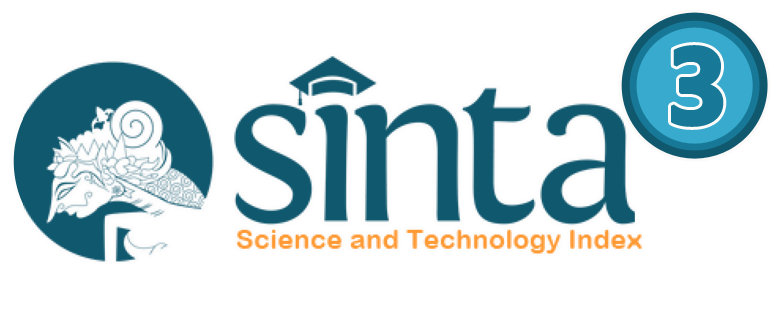Psychological Bullying in Environmental Agency of Central Bengkulu Regency: A Stress-Model Transactional and Coping
DOI:
https://doi.org/10.18326/ijip.v6i2.2515Keywords:
psychological bullying of Environmental Agency, Central Bengkulu Regency, Stress - Model Transactional, coping strategiesAbstract
Workplace psychological bullying remains a significant concern, as the phenomenon in Environmental Agency of Central Bengkulu Regency. Despite Indonesia's low rates of daily workplace stress, 16% of workers report experiencing psychological bullying, negatively impacting mental health and job performance. The tragic case of Dr. Aulia Risma Lestari exemplifies the severe consequences of such bullying, including suicide. The study aims to identify the various forms of psychological bullying encountered by civil servants and the coping strategies they employ. Applying Lazarus and Folkman’s Transactional Model of Stress, this research analyzes how individuals perceive and respond to stressors associated with psychological bullying. A mixed-method approach was used, combining quantitative data from questionnaires completed by 28 civil servants with qualitative insights from comprehensive interviews. The findings reveal that verbal abuse, excessive workloads, neglect, and humiliating pranks are prevalent forms of bullying. The coping strategies employed include problem-focused approaches, such as planful problem-solving and seeking social support, alongside less effective emotion-focused strategies like avoidance. The study underscores the need for robust organizational policies to address psychological bullying and support affected public servants by promoting a more conducive work environment.
References
H. Akbar, A. M. D. Asri, H. Kaseger, D. Novitasari, and A. A. Aryanto, “Hubungan Umur, Masa Kerja dan Tuntutan Kerja dengan Stres Kerja pada Karyawan PDAM di Kabupaten X,” Promot. J. Kesehat. Masy., vol. 14, no. 1, pp. 1–6, 2024.
A. HUSSAIN, “EXAMINING THE IMPACT OF BULLYING ON THE SOCIAL INTELLIGENCE AND PERCEIVED SOCIAL COMPETENCE OF PAKISTANI ADOLESCENTS,” 2024.
J. Fraser, The Bullied Brain: Heal Your Scars and Restore Your Health. Rowman & Littlefield, 2022.
M. Hodgins, R. Kane, Y. Itzkovich, and D. Fahie, “Workplace Bullying and Harassment in Higher Education Institutions: A Scoping Review,” Int. J. Environ. Res. Public. Health, vol. 21, no. 9, p. 1173, 2024.
F. Sulejmanov, K. Petr, J. Gambová, T. Platt, and M. Seitl, “Exposure to workplace bullying: the incremental effect of gelotophobia beyond the big five,” Front. Psychol., vol. 15, p. 1400940, 2024.
P. M. Conway, A. Høgh, C. Balducci, and D. K. Ebbesen, “Workplace bullying and mental health,” Pathw. Job-Relat. Negat. Behav., pp. 101–128, 2021.
C. Balducci, E. Baillien, A. V. den Broeck, S. Toderi, and F. Fraccaroli, “Job demand, job control, and impaired mental health in the experience of workplace bullying behavior: A two-wave study,” Int. J. Environ. Res. Public. Health, vol. 17, no. 4, p. 1358, 2020.
H. Ben-Zur, V. Zeigler-Hill, and T. Shackelford, “Transactional model of stress and coping,” Encycl. Personal. Individ. Differ., pp. 1–4, 2019.
X. Sun, B. J. Li, H. Zhang, and G. Zhang, “Social media use for coping with stress and psychological adjustment: A transactional model of stress and coping perspective,” Front. Psychol., vol. 14, p. 1140312, 2023.
J. W. Creswell, Educational research: Planning, conducting, and evaluating quantitative and qualitative research. pearson, 2015.
V. L. P. Clark and N. V. Ivankova, Mixed methods research: A guide to the field, vol. 3. Sage publications, 2015.
J. W. Creswell and J. D. Creswell, Research design: Qualitative, quantitative, and mixed methods approaches. Sage publications, 2017.
P. Brough, Advanced research methods for applied psychology: Design, analysis and reporting. Routledge, 2018.
P. P. Kuantitatif, “Metode Penelitian Kunatitatif Kualitatif dan R&D,” Alf. Bdg., 2016.
L. Mari, M. Wilson, and A. Maul, Measurement across the sciences: Developing a shared concept system for measurement. Springer Nature, 2023.
A. Mendonca and P. D’Cruz, “Workplace bullying, emotional abuse and harassment in the context of dirty work,” Spec. Top. Part. Occup. Prof. Sect., pp. 551–586, 2021.
V. Boudrias, S.-G. Trépanier, and D. Salin, “A systematic review of research on the longitudinal consequences of workplace bullying and the mechanisms involved,” Aggress. Violent Behav., vol. 56, p. 101508, 2021.
I. S. Borualogo and F. Casas, “Understanding Bullying Cases in Indonesia,” in Handbook of Children’s Risk, Vulnerability and Quality of Life: Global Perspectives, Springer, 2022, pp. 187–199.
S. Dimitrios, G. Vrakas, and P. Papadimitropoulou, “SCHOOL BULLYING IN HIGH SCHOOL STUDENTS, PREVENTION AND COPING STRATEGIES,” Eur. J. Educ. Stud., vol. 10, no. 7, 2023.
U. Flick, “The Sage handbook of qualitative data collection,” 2017.
A. M. Yusuf, Metode penelitian kuantitatif, kualitatif & penelitian gabungan. Prenada Media, 2016.
M. Glambek, A. Skogstad, and S. Einarsen, “Workplace bullying, the development of job insecurity and the role of laissez-faire leadership: A two-wave moderated mediation study,” Work Stress, vol. 32, no. 3, pp. 297–312, 2018.
D. Salin et al., “Prevention of and interventions in workplace bullying: A global study of human resource professionals’ reflections on preferred action,” Int. J. Hum. Resour. Manag., vol. 31, no. 20, pp. 2622–2644, 2020.
A. M. Neall, Y. Li, and M. R. Tuckey, “Organizational justice and workplace bullying: Lessons learned from externally referred complaints and investigations,” Societies, vol. 11, no. 4, p. 143, 2021.
A. Shafaei, M. Nejati, M. Omari, and F. Sharafizad, “Inclusive leadership and workplace bullying: a model of psychological safety, self-esteem, and embeddedness,” J. Leadersh. Organ. Stud., vol. 31, no. 1, pp. 41–58, 2024.
A. Bunce, L. Hashemi, C. Clark, S. Stansfeld, C.-A. Myers, and S. McManus, “Prevalence and nature of workplace bullying and harassment and associations with mental health conditions in England: a cross-sectional probability sample survey,” BMC Public Health, vol. 24, no. 1, p. 1147, 2024.
H. Scott, “Using the Workplace Power Control Wheel to Name Abusive, Bullying, Controlling, and Coercive Behavior by Corporate Psychopaths at Work,” in Psychopathy in the Workplace: Coping Strategies for Employees, Springer, 2024, pp. 153–169.
Y. Jie, D. Mokhtar, and N.-A. Abdullah, “The relationship between workplace bullying and family functioning: A systematic review,” PloS One, vol. 19, no. 9, p. e0310300, 2024.
Downloads
Published
Issue
Section
License
Copyright (c) 2024 IJIP : Indonesian Journal of Islamic Psychology

This work is licensed under a Creative Commons Attribution-ShareAlike 4.0 International License.

 Indonesian Journal of Islamic Psycology is licensed under a
Indonesian Journal of Islamic Psycology is licensed under a 


